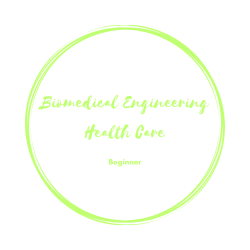
Biomedical Engineering - Health Care: BEGINNER Level
Price: $1.00 / Month
This beginner-level Biomedical Engineering and Health Care course offers a practical introduction to computational fluid dynamics (CFD) in medical applications using ANSYS Fluent. Through over 10 hands-on episodes, participants explore a range of biomedical simulations, including blood flow in healthy and occluded arteries, COVID-19 transmission, and drug delivery systems. The course covers non-Newtonian fluid modeling, respiratory health simulations, and pulsatile flow in complex geometries. It provides a solid foundation in using advanced engineering tools to address real-world healthcare challenges, making it ideal for students, engineers, and healthcare professionals seeking to understand CFD’s role in biomedical applications and gain practical medical simulation skills.

Biomedical Engineering - Health Care: BEGINNER Level
This beginner-level Biomedical Engineering and Health Care course offers a practical introduction to computational fluid dynamics (CFD) in medical applications using ANSYS Fluent. Through over 10 hands-on episodes, participants explore a range of biomedical simulations, including blood flow in healthy and occluded arteries, COVID-19 transmission, and drug delivery systems. The course covers non-Newtonian fluid modeling, respiratory health simulations, and pulsatile flow in complex geometries. It provides a solid foundation in using advanced engineering tools to address real-world healthcare challenges, making it ideal for students, engineers, and healthcare professionals seeking to understand CFD’s role in biomedical applications and gain practical medical simulation skills.
-
Section 1
Arterial Occlusion
-
Arterial Occlusion CFD Simulation
This episode, part of the Biomedical Engineering and Health Care: Beginner Level training course, focuses on applying Computational Fluid Dynamics (CFD) to model arterial occlusion using ANSYS Fluent. Arterial occlusion, a significant concern in cardiovascular medicine, occurs when blood flow is restricted or blocked in an artery. This simulation provides valuable insights into the hemodynamics of occluded arteries, helping biomedical engineers and healthcare professionals understand the impact of blockages on blood flow patterns, pressure distributions, and potential health risks. Key topics covered in this tutorial include: Importing the pre-designed arterial geometry with occlusion into ANSYS Fluent Defining appropriate boundary conditions to simulate blood flow Implementing basic blood flow properties in the CFD model Running the simulation to visualize blood flow in partially occluded arteries Analyzing results to understand velocity profiles, pressure drops, and potential areas of concern Through this hands-on tutorial, participants will gain practical experience in using CFD for cardiovascular applications. The knowledge gained from this simulation can contribute to the development of better diagnostic tools, treatment planning, and medical device design in the field of cardiovascular health. This episode demonstrates the power of computational modeling in advancing healthcare solutions, serving as a foundational step in applying engineering principles to complex medical problems.
Episode 1 Coming Soon
-
-
Section 2
Clogged Artery
-
Blood Flow in Clogged Artery CFD Simulation
This episode, part of the Biomedical Engineering and Health Care: Beginner Level training course, delves deeper into the application of Computational Fluid Dynamics (CFD) for simulating blood flow in clogged arteries using ANSYS Fluent. Arterial clogging, or atherosclerosis, is a prevalent cardiovascular condition with significant health implications. This simulation provides crucial insights into how blood flow is affected by arterial blockages, offering valuable information for biomedical engineers and healthcare professionals in understanding and addressing this common health issue. Key topics covered in this tutorial include: Setting up the pre-designed clogged artery model in ANSYS Fluent Configuring boundary conditions to accurately represent blood flow in a partially obstructed artery Implementing blood properties and flow characteristics in the CFD model Executing the simulation to visualize blood flow patterns in clogged arteries Analyzing results to understand: Velocity profiles before, at, and after the clogged region Pressure variations along the artery Potential areas of recirculation or stagnation Wall shear stress distribution Through this hands-on tutorial, participants will gain practical experience in using CFD to study cardiovascular conditions. The knowledge acquired from this simulation is invaluable for various applications in the biomedical engineering and healthcare fields. This episode builds upon previous lessons, further demonstrating the power of computational modeling in addressing complex cardiovascular issues. It reinforces the application of engineering principles to real-world medical problems, providing participants with skills that are directly applicable in their professional endeavors.
Episode 1 Coming Soon
-
-
Section 3
Pulsatile Blood - Arterial Bifurcation
-
Pulsatile Blood Flow in Arterial Bifurcation CFD Simulation
This episode, part of the Biomedical Engineering and Health Care: Beginner Level training course, delves into the complexities of pulsatile blood flow at arterial bifurcations using ANSYS Fluent Computational Fluid Dynamics (CFD) simulation. In this tutorial, participants will explore the dynamic nature of blood flow in the cardiovascular system, focusing on the critical area where an artery splits into two branches. The simulation will provide valuable insights into how pulsatile flow affects the hemodynamics at these junctions, offering crucial information for biomedical engineers and healthcare professionals studying cardiovascular health and disease. Learners will use ANSYS Fluent to set up a model of an arterial bifurcation and implement pulsatile flow conditions that mimic the rhythmic pumping of the heart. The tutorial covers configuring time-dependent boundary conditions, specifying blood properties, and setting up appropriate mesh and solver settings for accurate results. By analyzing the simulation outcomes, participants will gain a deeper understanding of flow patterns, pressure distributions, and wall shear stress variations throughout the cardiac cycle. This knowledge is fundamental in studying various cardiovascular conditions, including atherosclerosis formation and aneurysm development. This hands-on experience demonstrates the power of CFD in visualizing and quantifying complex physiological processes, highlighting the importance of computational modeling in biomedical research and clinical applications. The episode reinforces the application of engineering principles to intricate biological systems, providing participants with practical skills directly applicable in cardiovascular research, medical device design, and personalized medicine.
Episode 1 Coming Soon
-
-
Section 4
Corona - Talking Effect
-
Talking Spread COVID-19 CFD Simulation
This episode, part of the Biomedical Engineering and Health Care: Beginner Level training course, explores the application of Computational Fluid Dynamics (CFD) to simulate the spread of COVID-19 through airborne particles during talking, using ANSYS Fluent. The tutorial focuses on using the Discrete Phase Model (DPM) to accurately represent COVID-19 virus particles within respiratory droplets. Participants will learn to set up a pre-designed model of a person talking, implement appropriate boundary conditions, and configure DPM parameters to simulate the size, mass, and behavior of potentially virus-laden droplets. By running the simulation and analyzing the results, participants will gain insights into droplet trajectory, dispersion patterns, and the influence of airflow on particle movement. This hands-on experience provides valuable skills in applying advanced CFD techniques to study airborne disease transmission, demonstrating how computational modeling can contribute to understanding complex public health challenges at a particle level. This episode showcases the power of engineering tools in addressing pressing biomedical and healthcare issues, offering participants practical knowledge applicable to various scenarios in their field.
Episode 1 Coming Soon
-
-
Section 5
Corona - Shield Effect
-
Covid-19: Consideration for Wearing Shields CFD Simulation
This episode, part of the Biomedical Engineering and Health Care: Beginner Level training course, explores the effectiveness of face shields in preventing the spread of COVID-19 using ANSYS Fluent Computational Fluid Dynamics (CFD) simulation. In this tutorial, participants will use ANSYS Fluent to model and simulate the flow of respiratory droplets around a person wearing a face shield. The simulation will provide valuable insights into how face shields interact with potentially virus-laden droplets, offering crucial information for biomedical engineers and healthcare professionals in assessing and improving personal protective equipment (PPE). The tutorial covers setting up the simulation environment, including a model of a person wearing a face shield, and implementing the Discrete Phase Model (DPM) to represent respiratory droplets. Participants will learn to configure boundary conditions, material properties, and particle characteristics to accurately simulate real-world conditions. By analyzing the simulation results, learners will gain a deeper understanding of the shield’s effectiveness in blocking or redirecting droplets, as well as any potential weaknesses in the design. This hands-on experience demonstrates the power of CFD in evaluating and potentially improving PPE designs, showcasing the vital role of computational modeling in addressing urgent public health challenges. This episode reinforces the application of engineering principles to real-world medical problems, providing participants with practical skills directly applicable in the biomedical engineering and healthcare fields, particularly in the context of infectious disease control and prevention.
Episode 1 Coming Soon
-
-
Section 6
Asthma Spray Injection in Lung
-
Asthma Spray Inhaler Injection Into the Lung CFD Simulation
This episode, part of the Biomedical Engineering and Health Care: Beginner Level training course, focuses on simulating the delivery of asthma medication through a spray inhaler into the human lung using ANSYS Fluent Computational Fluid Dynamics (CFD). In this tutorial, participants will explore the complex process of aerosol drug delivery, a crucial aspect of asthma management. The simulation will provide valuable insights into how inhaled medication particles travel through the airways, offering essential information for biomedical engineers and healthcare professionals working on respiratory drug delivery systems. Learners will use ANSYS Fluent to set up a model of the upper respiratory tract and a portion of the lung. The tutorial covers configuring the Discrete Phase Model (DPM) to represent the aerosolized medication particles, setting up appropriate boundary conditions to mimic inhalation, and defining the properties of both the air and the drug particles. Participants will learn to simulate the spray injection from the inhaler, tracking the trajectory and deposition of medication particles through the airways. The tutorial will guide learners through analyzing key factors such as particle size distribution, flow rates, and anatomical features that influence drug delivery efficiency. By examining the simulation results, participants will gain a deeper understanding of particle deposition patterns, the influence of airway geometry on drug distribution, and the overall effectiveness of the inhaler design. This knowledge is crucial for optimizing inhaler devices and improving treatment outcomes for asthma patients. This hands-on experience demonstrates the power of CFD in visualizing and quantifying complex physiological processes, highlighting the importance of computational modeling in pharmaceutical research and medical device development. The episode reinforces the application of engineering principles to real-world healthcare challenges, providing participants with practical skills directly applicable in respiratory medicine, drug delivery system design, and personalized treatment strategies.
Episode 1 Coming Soon
-

Course In Progress
Course still in development. Check back often for updates.
This course provides a comprehensive introduction to biomedical engineering applications using computational fluid dynamics (CFD) with ANSYS Fluent. Designed for beginners, it covers a wide range of medical scenarios through practical simulations. The curriculum includes over 10 episodes, each focusing on a specific biomedical application, from cardiovascular health to respiratory diseases and drug delivery systems.
Key features:
- Hands-on experience with ANSYS Fluent for medical simulations
- Focus on real-world healthcare challenges
- Diverse range of applications including cardiovascular, respiratory, and pharmaceutical
- Introduction to advanced concepts like non-Newtonian fluid modeling and pulsatile flow
- Practical skills development in CFD for biomedical engineering
The course is structured to build foundational knowledge progressively, making it suitable for students, engineers, and healthcare professionals looking to enter the field of biomedical engineering or enhance their understanding of CFD applications in healthcare. By the end of the course, participants will have gained valuable insights into how engineering tools can be applied to solve complex medical problems and improve patient care.
Subscribe to Course
Benefits of subscribing to the course
- Complete access to All chapters
- Special discount
- Free access to all new and updated content
- Cancel subscription anytime
* You will have access to the course only until your subscription ends; after that, your subscription will be automatically renewed unless you cancel it.
Congratulations
Congratulations! You have successfully subscribed to the course.
You can now start learning the course by clicking the button "Start Learning".
Alternatively, you can manage your subscription like canceling or upgrading the subscription, adding or changing the payment method, etc by clicking the button "Manage Subscriptions".
Add Payment Method
Please enter your payment method details.